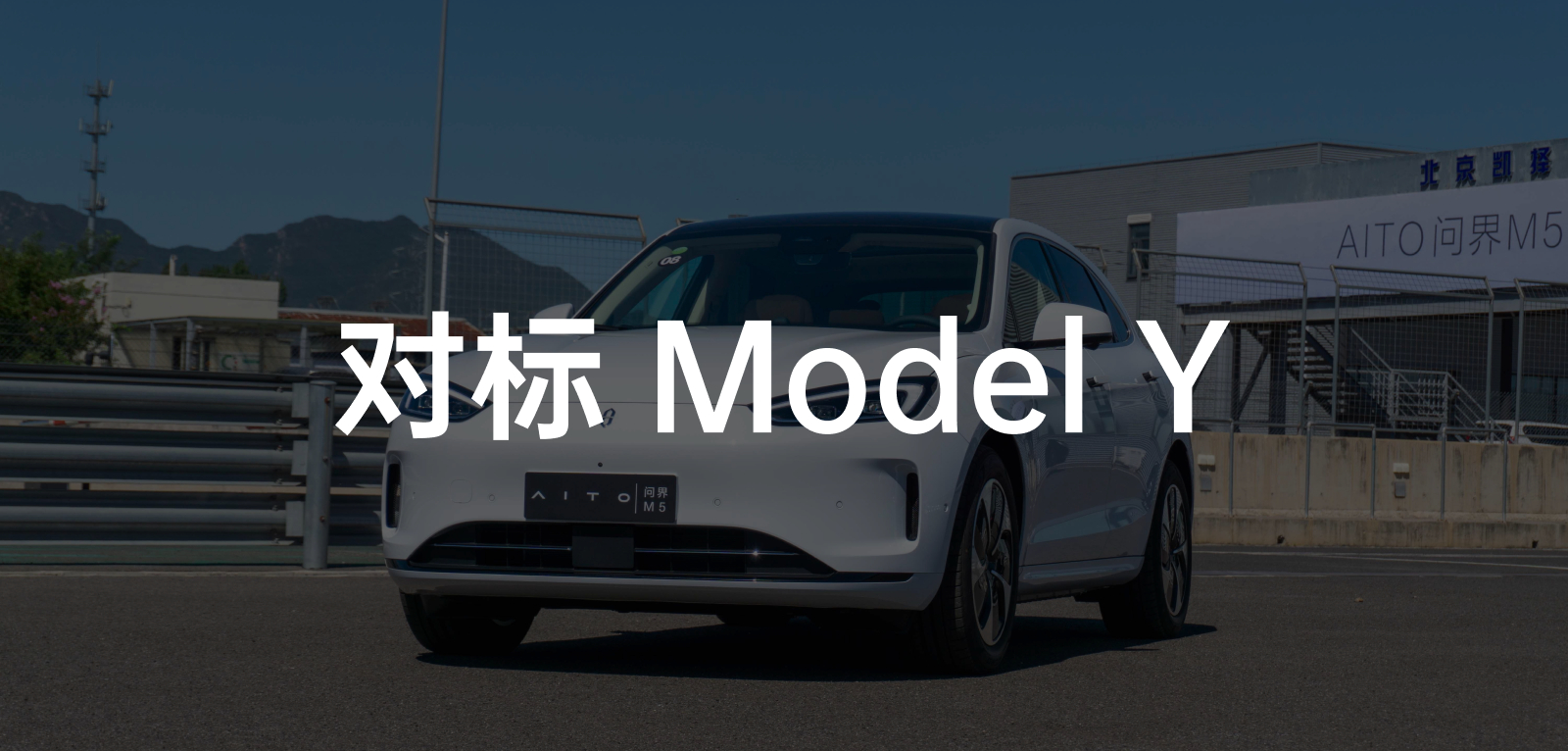Finally, the Wanjie M5 EV model was launched at the just-concluded Huawei Autumn Conference after much anticipation. The Wanjie M5 EV has two configurations (Standard and Performance versions) with prices of 288,600 and 3.198 million yuan respectively.
At the beginning of the conference, Yu Chengdong used the high spirits of the audience to boost the newly delivered Wanjie M7 and announced that there would be 820+ stores covering over 180 cities in September.
Subsequently, the entire conference was devoted to the M5 EV.
Improved Appearance
At the conference, Yu Chengdong again repeated his “narcissistic” remarks, saying that the Wanjie M5 EV is the best-looking pure electric SUV.
Is it really that good-looking? Aesthetics are subjective. Before introducing the M5 EV, let’s take a look at some real shots to see if it lives up to Yu Chengdong’s top praise as “the world’s best-looking pure electric SUV”.
Compared with the Wanjie M5 extended-range version, the most significant, and also the most basic change of the EV version model is the enclosed design of the front face, weakening the “Macan feel” and strengthening the “electric feel”. At the same time, although there is no significant change in the shape of the headlamp contour of the EV version model, the internal lens has been added, giving a more “divine” appearance, but the functional changes are not significant, only integrating the steering function into the “hook-shaped” LED light strip.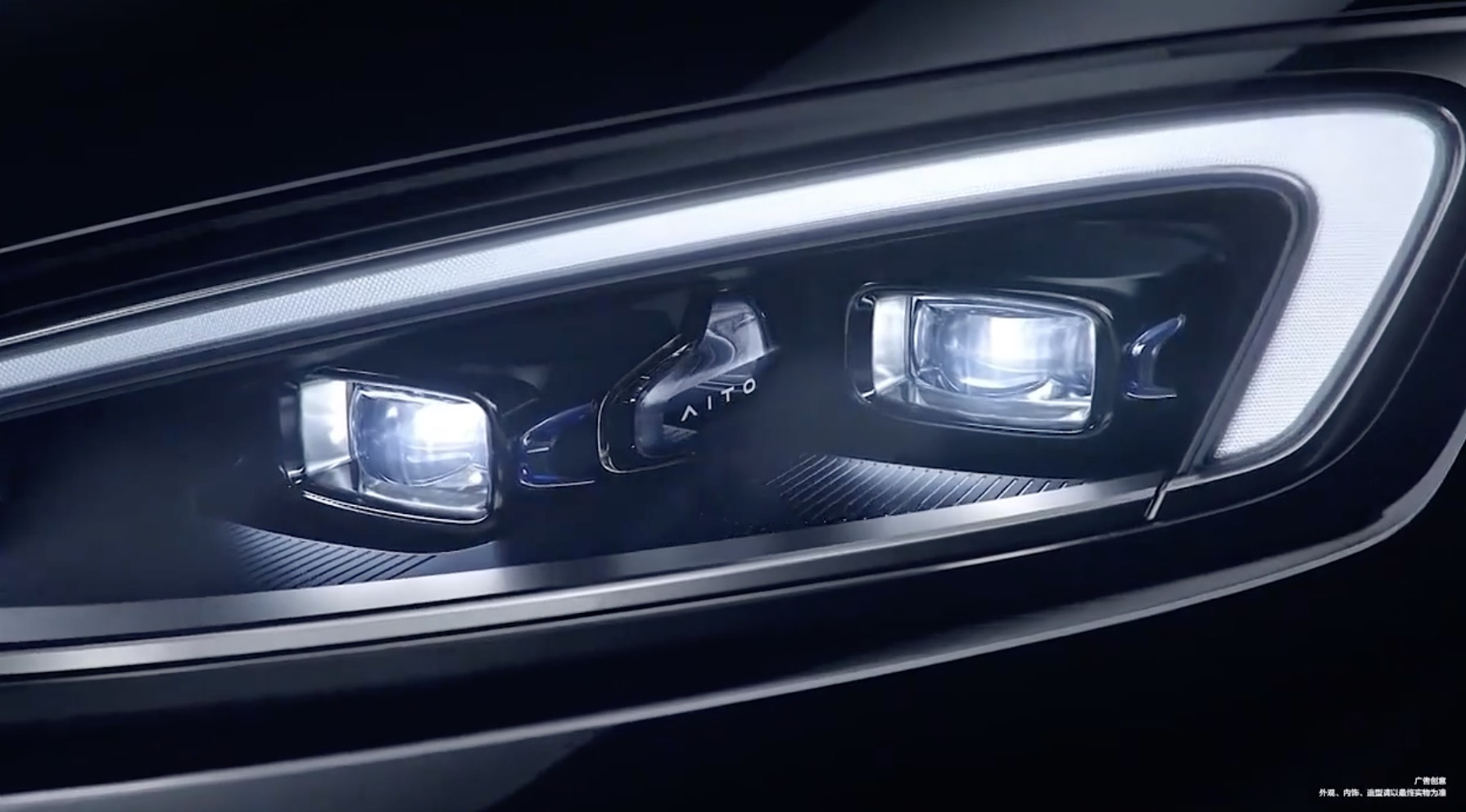
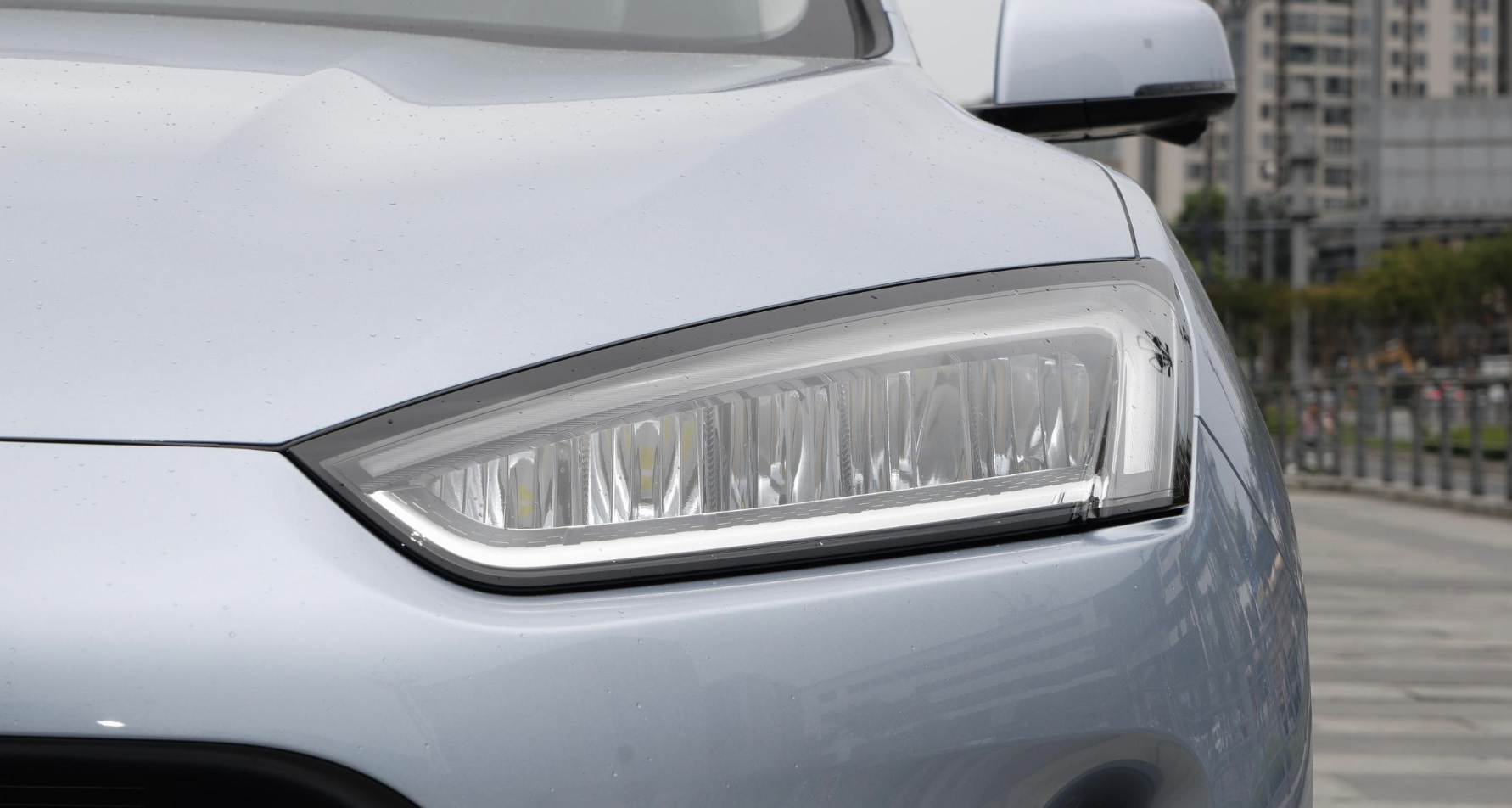
Apart from the two changes on the front end, there is almost no obvious difference in design between the pure electric M5 and the extended-range version, only improved optimization on details. For example, the hidden door handles of the EV model have been changed from single-side pop-out to whole-piece pop-out, greatly improving both the texture and the sense of luxury.
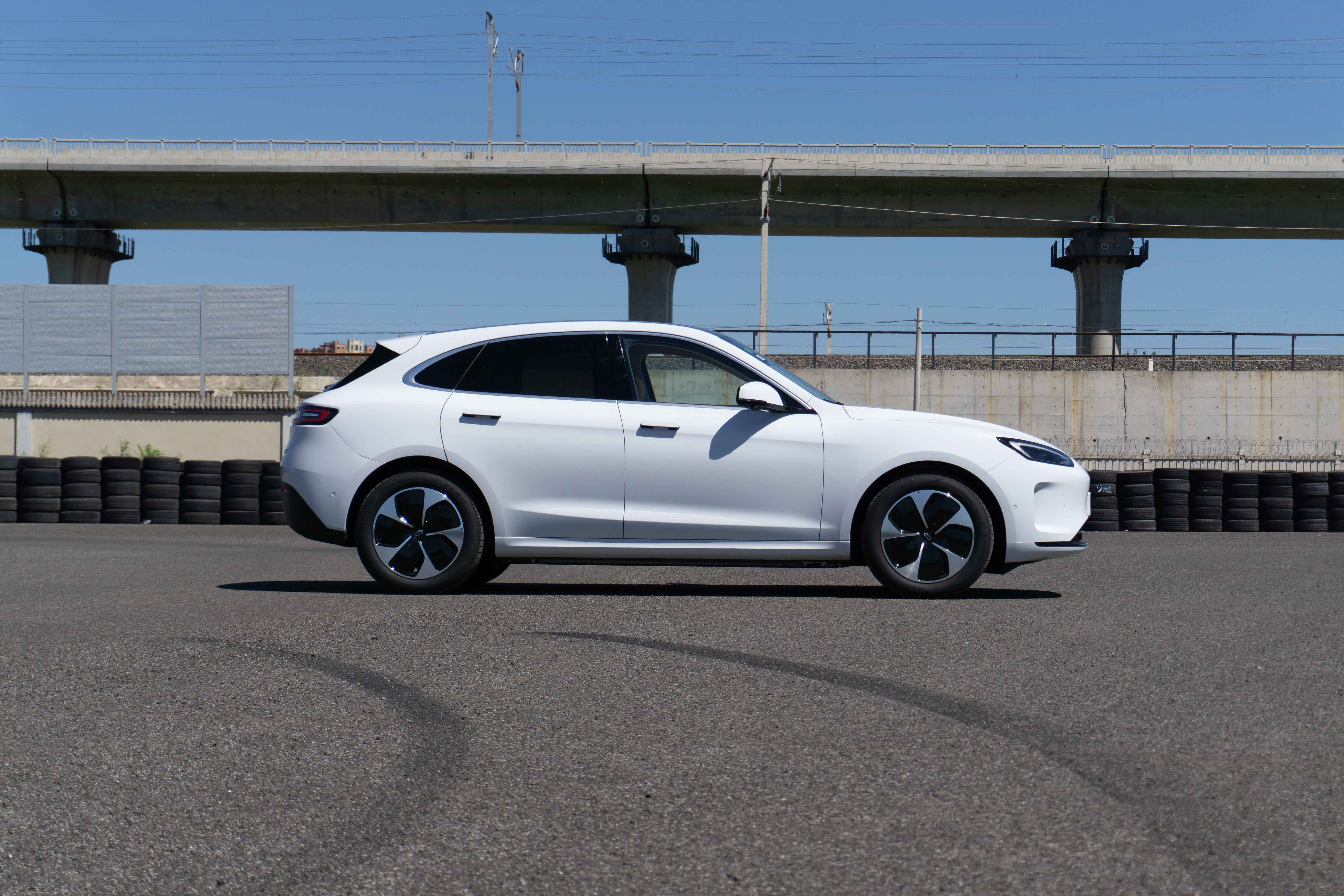
That is especially true for the rear end, where even using a “spot the difference” approach can only reveal that the electric version has an “EV” badge.
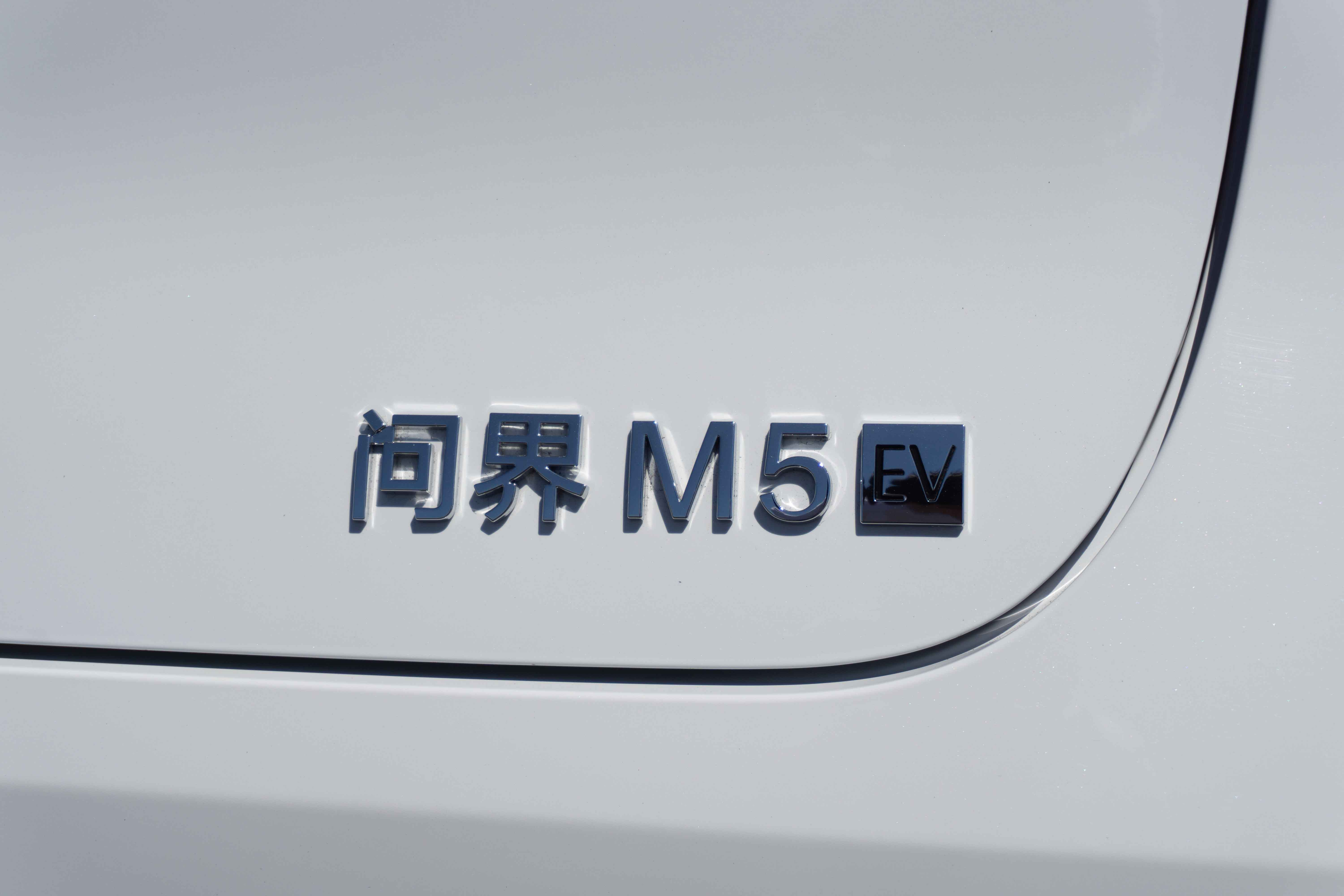
After comparing the sizes of vehicles in the same class, we found that M5 EV only has a 35mm difference in body length compared to the Model Y, and the error in other dimensions is within 1cm.
From the size of the body, you can already see that M5 EV wants to “catch up with and surpass Model Y”, but as for how to achieve it, that’s what we’ll discuss later.

M5 EV has added two new colors compared to the extended-range version, namely “Buddha’s Dawn” and “Warm Star Cloud”. There are also four available interior colors. Among them, M5 is very bold in using the highly saturated “Sparrow Feather Red” inside the car, and the combination of red and black is clearly aimed at the consumer group pursuing sports individualization.
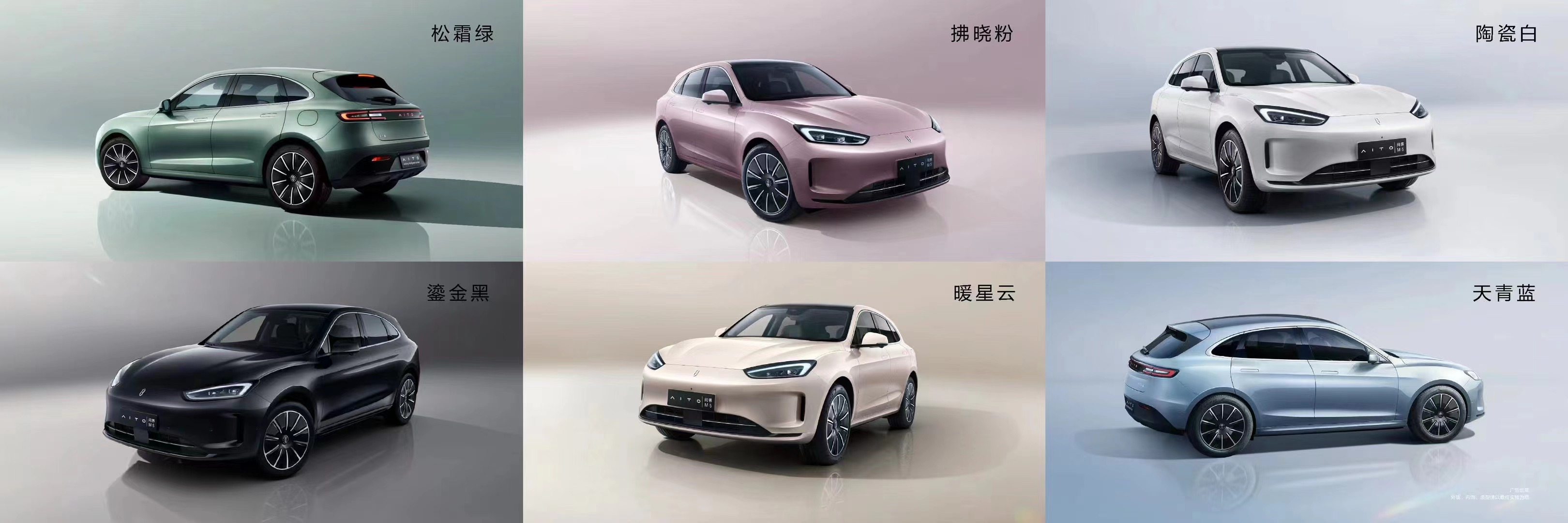
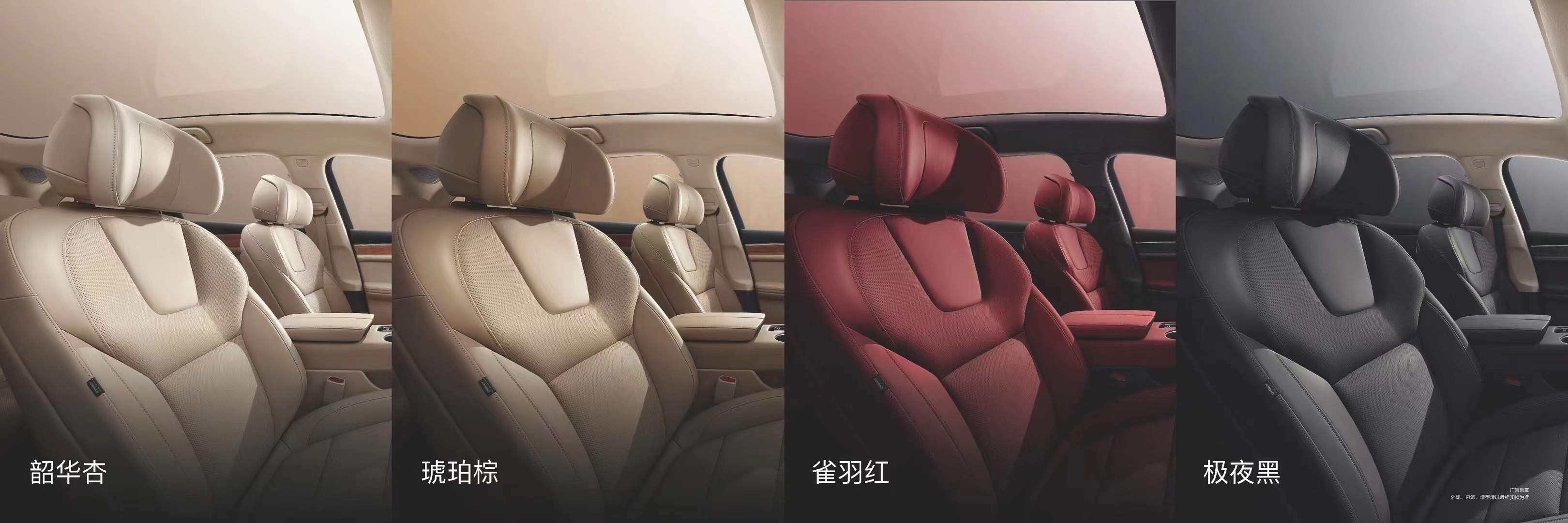
Using the Cabin to Bully Model Y?
If the exterior only makes small changes around “electrification”, then the interior is a complete copy of the M7. But compared to the extended-range M5, this is also an “upgrade”.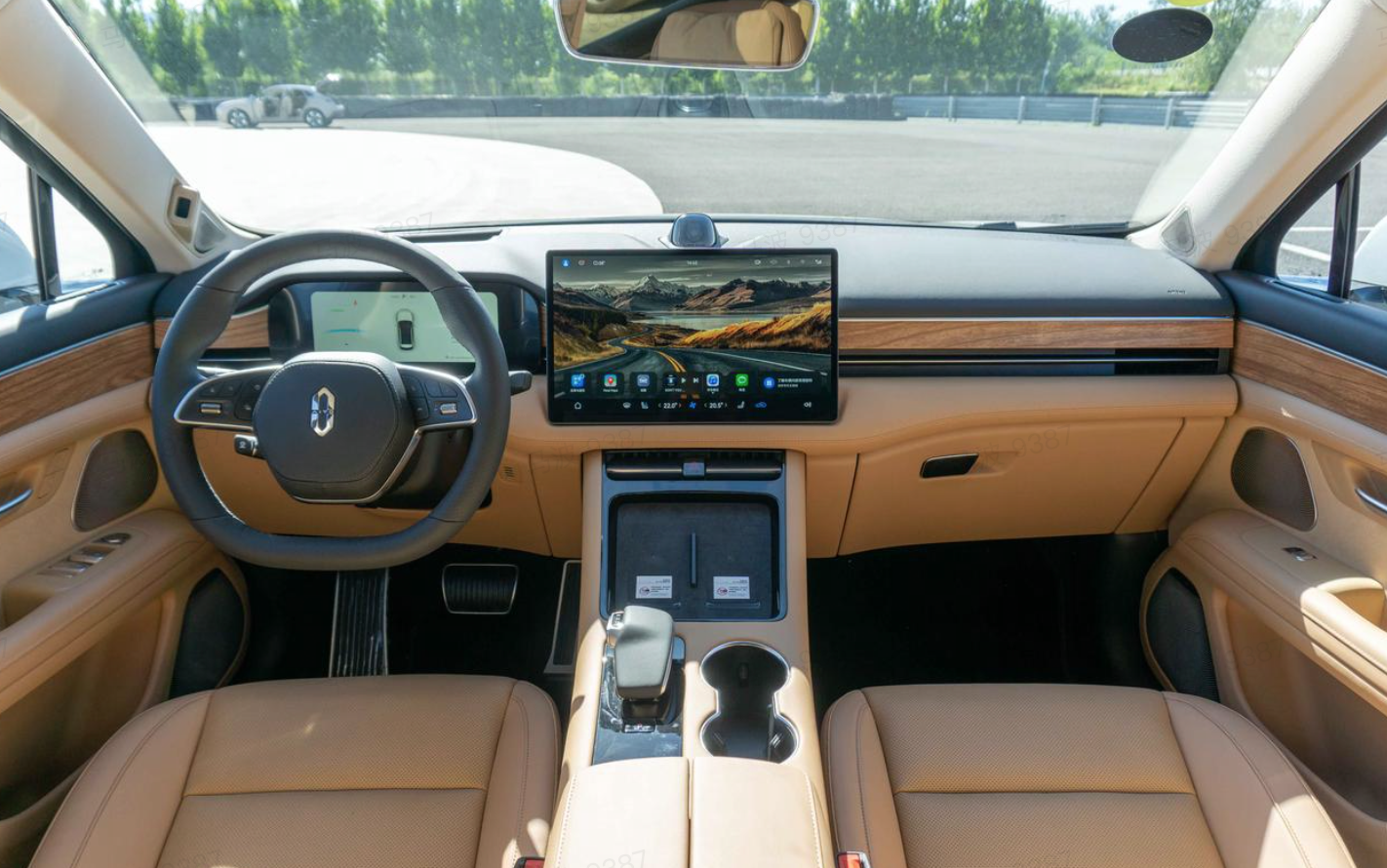
Small Improvements
Although the overall style has not changed, many shortcomings of the M5 extended-range version have been improved. For example, the M5 EV provides dual cup holders, dual 40W wireless charging, and is equipped with three 66W wired fast charging and one 18W wired fast charging, which can be said to take care of both charging speed and demand.
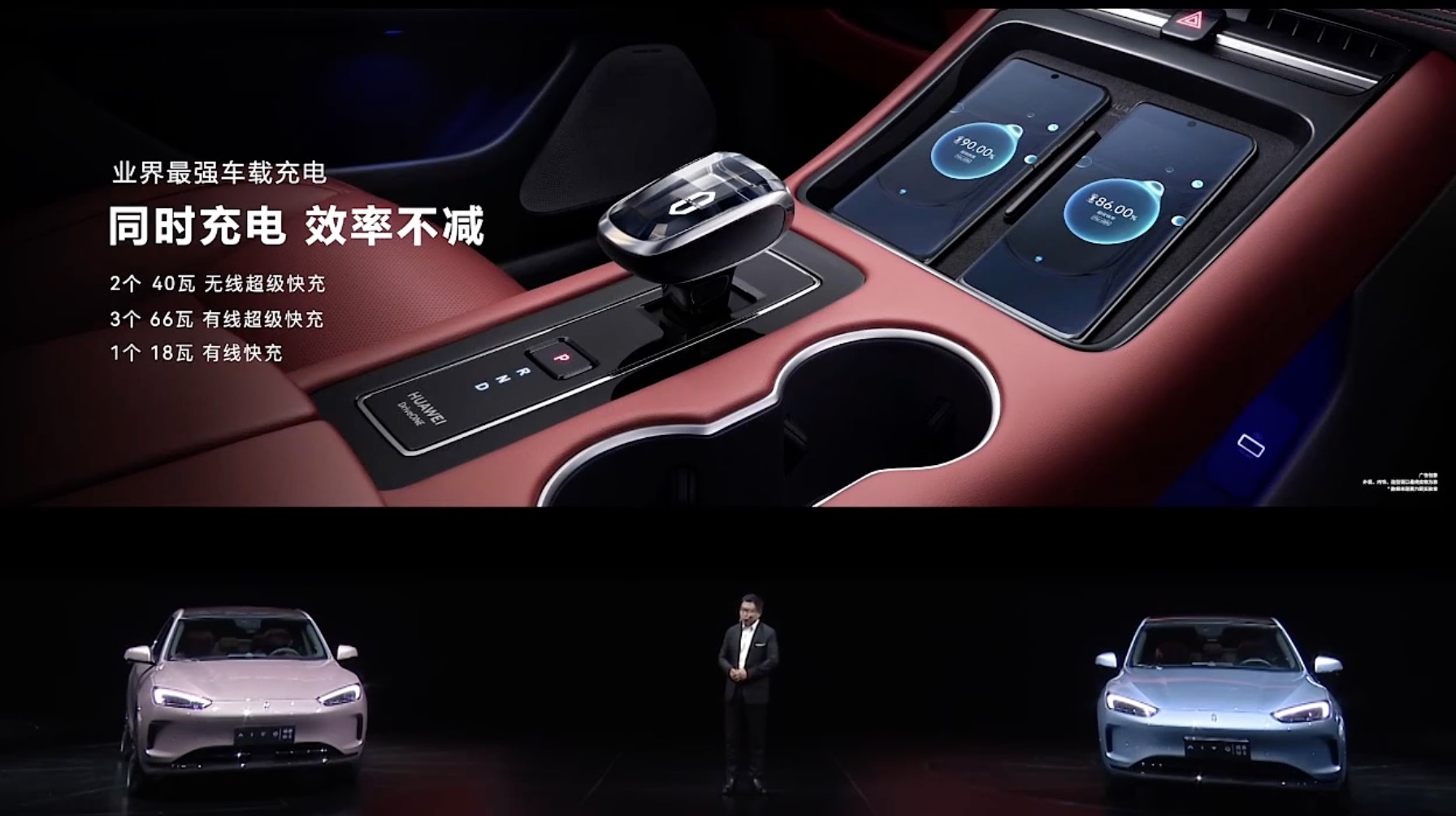
Another major selling point of the cabin is the HUAWEI SOUND audio system, with a total of 19 acoustic units in the entire M5 EV, including four headrest speakers, with a total power of 1,000 W. Like the M7, the M5 EV model is also equipped with two external speakers.
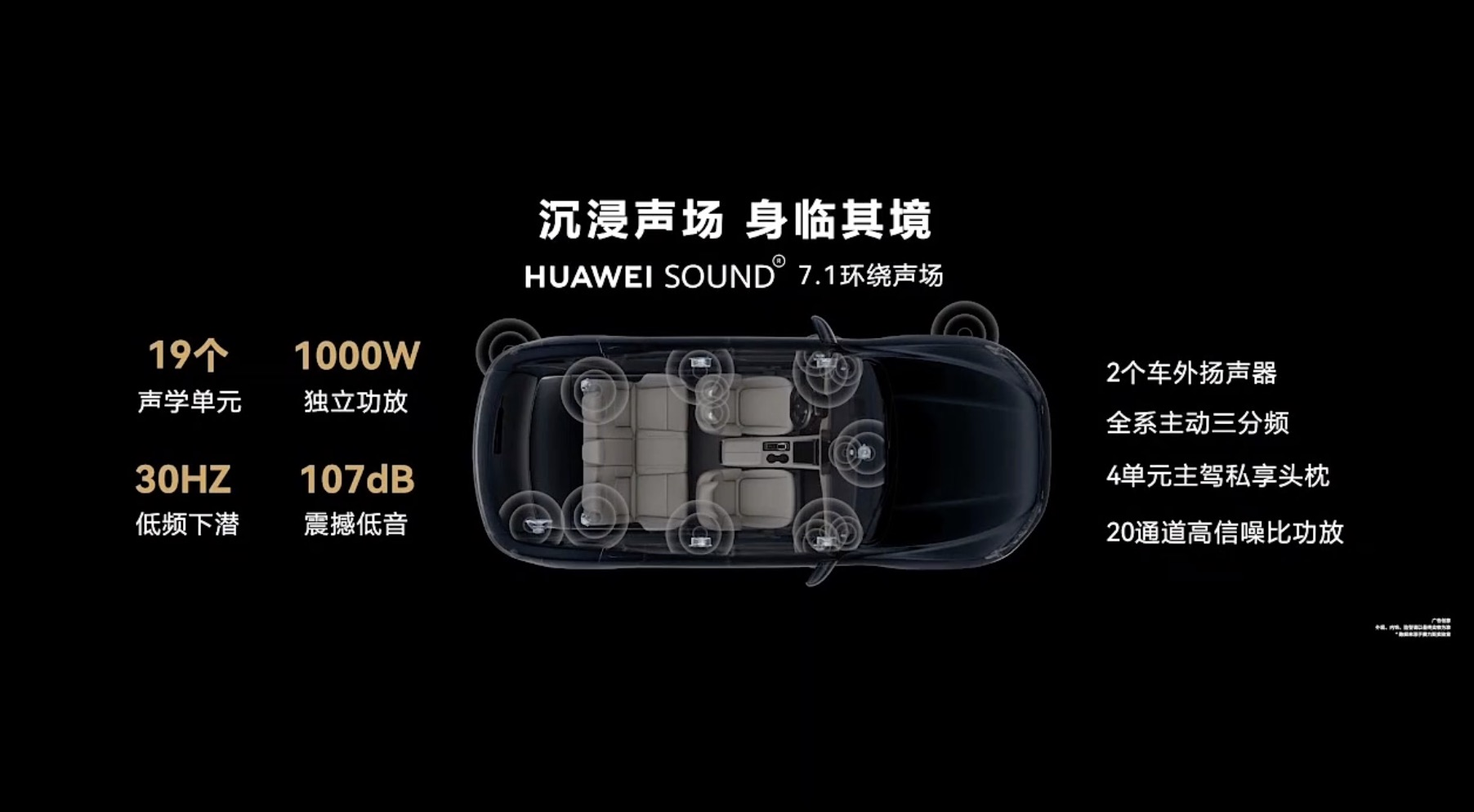
At the press conference, Huawei continuously used the Tesla Model Y as a benchmark opponent.
Regardless of the mid-size sedan or SUV market, the common practice of independent brands is to compete with mismatches while using stronger localization capabilities to create advantages. When the benchmark has a significant weakness, this weakness becomes a breakthrough for competitors.
Everyone knows that the Model 3 is a model with excellent driving experience and outstanding assisted driving ability, but the weakness lies in the localization ability and space of the cabin. Therefore, the opportunity for the P7 and BYD Han to break through falls on the comfort of the ride and the interactive experience of the cabin.
And we have seen the results, both BYD and XPeng have successfully achieved success in the incremental market of pure electric sedans using a C-level model under Tesla’s nose.
问界 understands this well, and Huawei’s strengths coincide with Tesla’s weaknesses.
In addition to the wireless charging, sound system and other configurations mentioned earlier, Wanjie also made thoughtful upgrades to the M5 EV cabin in multiple places, enhancing the user experience while taking advantage of Tesla.
For example, Tesla’s major flaw – sound insulation.
All of the M5 EV uses double-layer laminated glass, including the skylight. This reduces the noise of the vehicle to only 61.4 dBA when driving at 60 km/h on rough roads. In order to emphasize the difference of 3.7 dBA from Tesla Model Y, Wanjie deliberately made emphasis annotations on the PPT.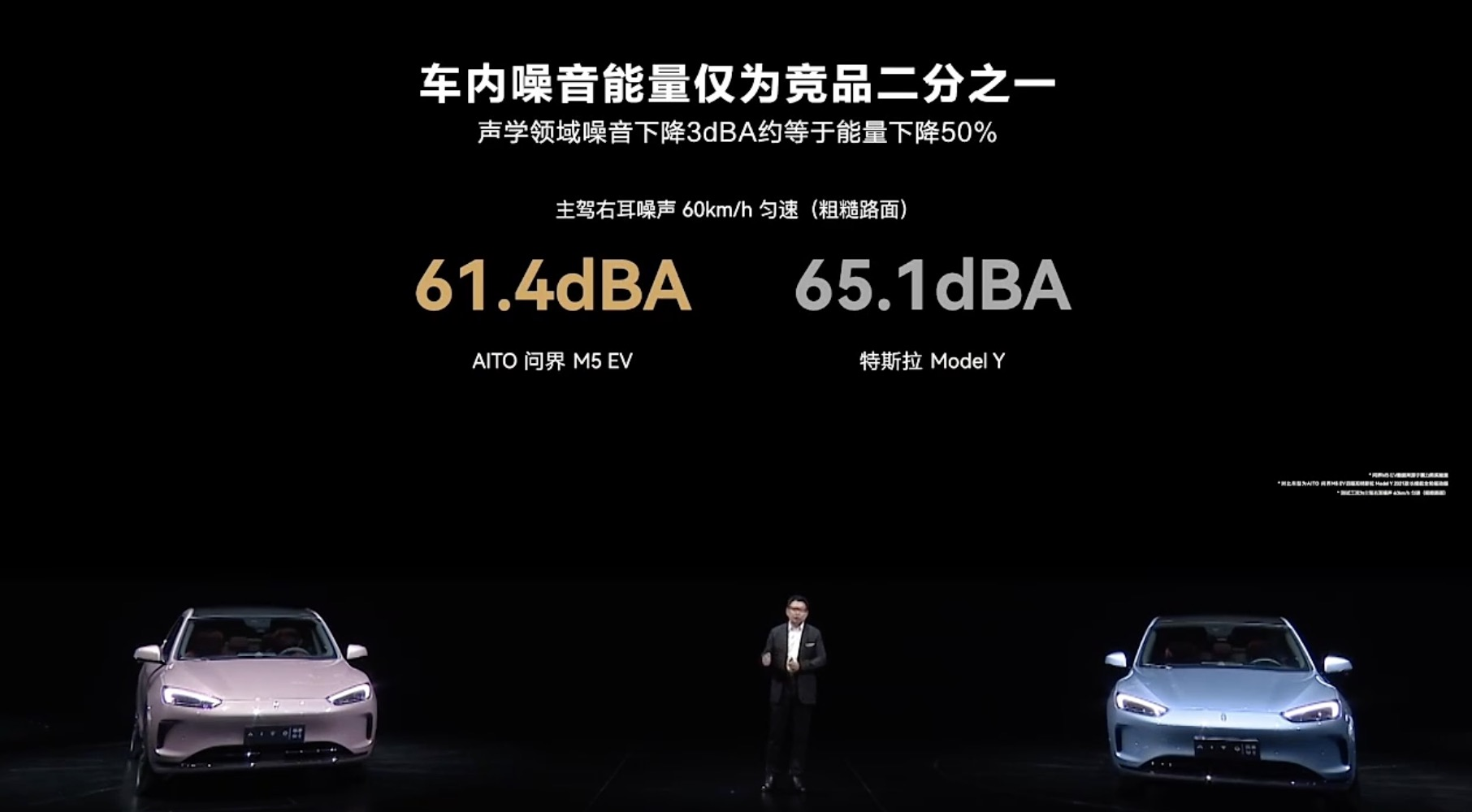
We all know that the thermal insulation capability of Tesla’s panoramic roof has always been a weakness. Wanjie, of course, could not “let it go”. Wanjie conducted a 38-degree Celsius exposure test on both the M5 EV and Model Y. As a result, the temperature inside the M5 EV reached 45°, while the Model Y reached 65°.
Wanjie also made “fine-tuning” in many details to improve the cabin usage experience. For example, for simple makeup mirrors, Wanjie has set up 9 levels of adjustable brightness and color temperature, which are the “humanized” details that Tesla unintentionally improved.
Of course, the above are only small tricks to please users on the details. The Hongmeng cockpit is the real punch that hit Tesla’s soft spot.
As for the Hongmeng cockpit, in fact, we have already had an understanding and experience based on the M5 extended version and M7. This time, let’s talk about some changes.
Super Desktop launched
First of all, the “Super Desktop” function that was preheated at the M7 launch conference is, of course, the focus of the Hongmeng cockpit. The role of this function is to seamlessly transfer the top applications in the mobile phone ecology to the in-car system for use. The advantage of this feature is that it seems to achieve the sharing of the mobile phone and in-car system ecology. However, the current Hongmeng system has not adapted to mobile phone applications, and the user experience is not good enough.
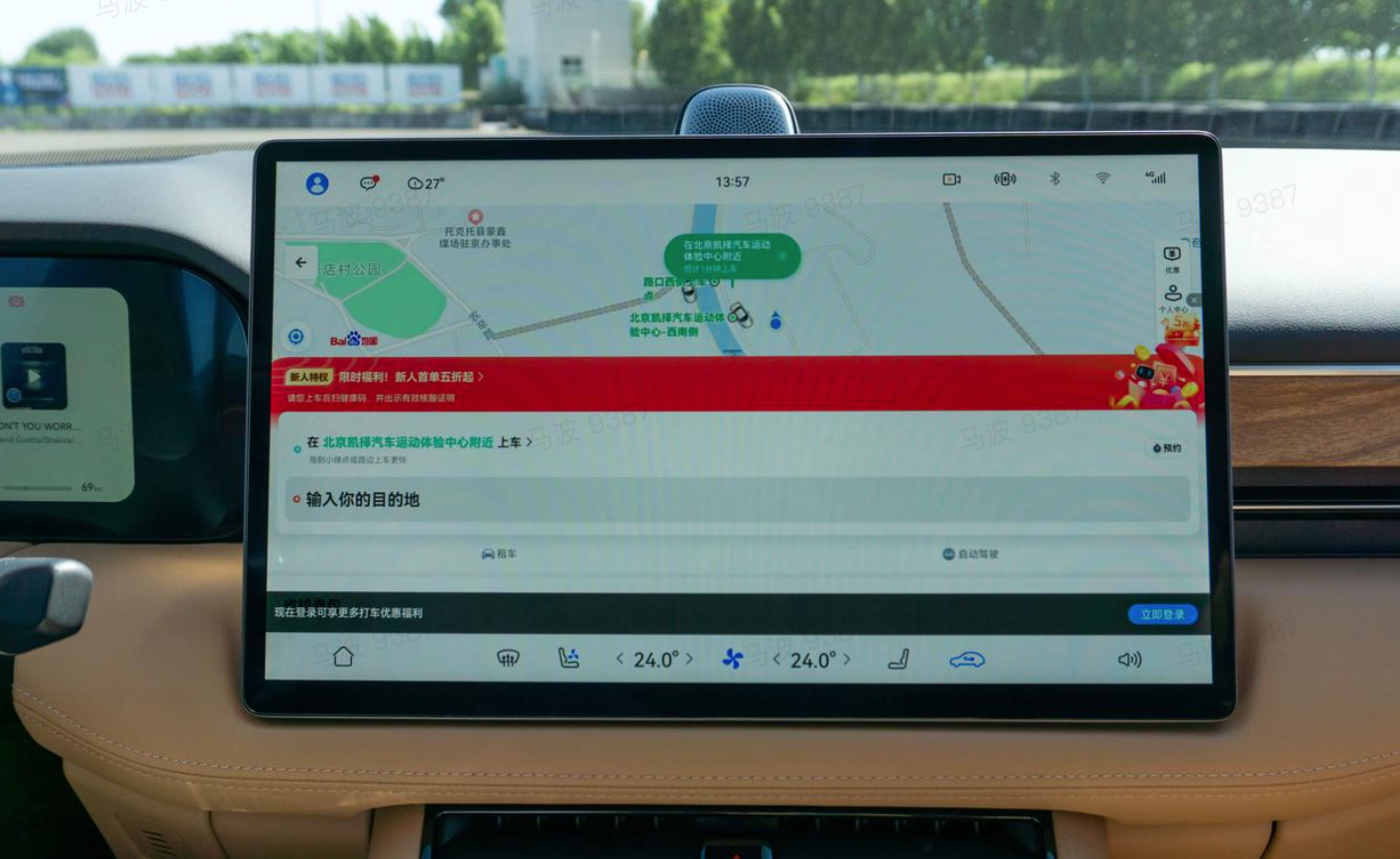
At the same time, the functions of the Hongmeng 3.0 cockpit also include dual-screen collaboration, automatic synchronization of mobile phone schedules, Xiaoyi parking space search, underground garage vehicle search, intelligent sharing of mobile phone network, etc. Among them, dual-screen collaboration refers to other Hongmeng devices of passengers in the car that can wirelessly cast to the central control screen to achieve the expanded screen effect.
Deficiencies in the Three Electric Levels
After talking about the biggest highlight of this car, let’s take a look at Wanjie’s first pure electric vehicle’s three electric levels.
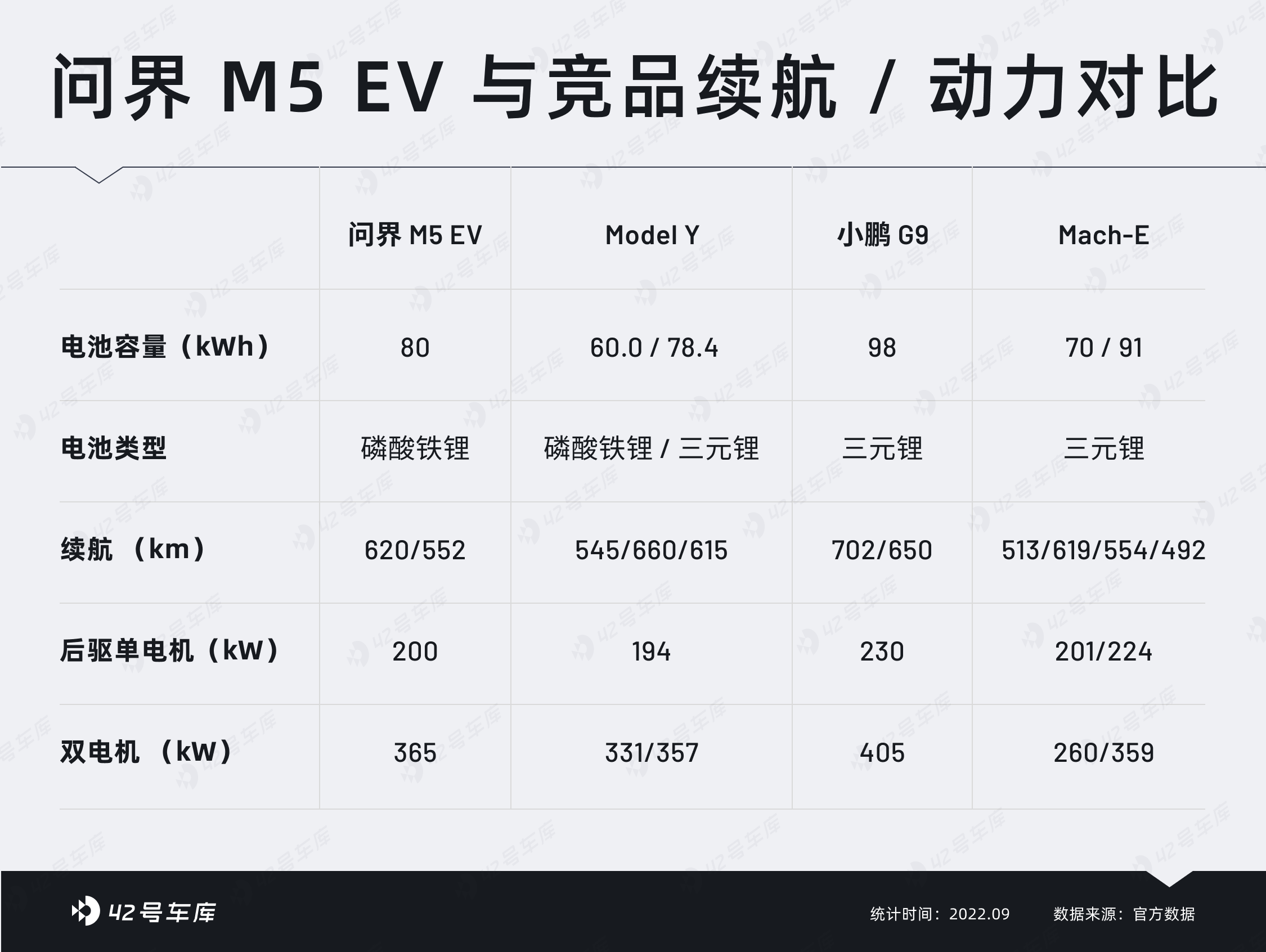
First, Wanjie did not create too many SKUs for electric motors and batteries. There is only one battery and two electric motors for two models.
The four-wheel-drive version of the Wanjie M5 EV uses a combination of front AC asynchronous motor and rear permanent magnet synchronous motor, with a front motor of 165 kW, a rear motor of 200 kW, a total power of 365 kW for the four-wheel-drive version, and a 200 kW power for the rear-wheel-drive version. The dual-motor power is slightly better than that of the Model Y Performance on paper. The acceleration of the four-wheel-drive version is 4.5 seconds per 100 km, and the rear-wheel-drive version is 7.1 seconds.Battery-wise, both M5 EV models use 80 kWh lithium iron phosphate batteries, with CLTC range of 620 km and 552 km respectively.
In terms of energy replenishment, Yu Chengdong announced that Wanjie has obtained the industry’s first five-star certification for charging compatibility, which can support 35 charging station operators and cover over 97% of public charging stations.
However, Wanjie did not mention any targets or plans for building its own energy replenishment facilities. For the time being, it seems that Wanjie has not been enthusiastic about infrastructure construction. At the same time, no information about the replenishment speed of M5 EV was released during the press conference, except for a short video clip where it was mentioned that one cup of coffee could get one back on the road.
According to the official website, M5 EV can supplement its range by 120 kilometers in 10 minutes. However, a big premise is not mentioned, which is SoC.
The Wanjie M5 EV uses a full-aluminum alloy chassis, with double wishbone suspension at the front and H-shaped multi-link structure at the rear, made of the same material and configuration as the extended-range version of M5. However, it is worth noting that even with an all-aluminum chassis, the weight of M5 EV still reaches 2,235 kg.
In addition, the Wanjie M5 is also equipped with the DATS dynamic adaptive torque system jointly developed by Sylphy Cars and Huawei. This function can dynamically allocate torque according to road conditions and wheel adhesion. Yu Chengdong said that when the vehicle passes through speed bumps at a speed of 40 km/h, the system can help reduce the time of wheel speed fluctuation stabilization by 46% and the forward acceleration (front-end dip) by 31%. In short, this system can more quickly stabilize the vehicle on uneven roads.
Yu Chengdong specifically emphasized that only Tesla and Wanjie can achieve this technology.
If you also watched this press conference, you would easily feel that Yu Chengdong deliberately spent a lot of time actively benchmarking Tesla. However, Tesla’s weakness coincides with Wanjie M5 EV’s shortcoming in terms of assisted driving abilities.# M5 EV’s Use of Bosch’s Suite of Technologies for ADAS
The M5 EV uses Bosch’s suite of technologies for its Advanced Driver Assistance System (ADAS), but the hardware is relatively weak, and the features it provides are very basic. Additionally, due to limitations in the vehicle’s architecture, this ADAS system is not upgradeable. If you place great importance on ADAS functions when buying a car, then this model may not be suitable for you.
What Kind of Chemical Reaction Can the Appearance of the M5 EV Bring About?
Before I discuss the significance of this car to the market, let me tell a quick story.
Recently, I took a taxi, and being someone who loves chatting with electric vehicle drivers, I started looking around his car and trying to find a topic.
Sure enough, the best way to begin was to talk about its range. After we made a series of consensus-like complaints about the poor range of the “old” electric vehicle he was driving, he said to me: “I saw Huawei’s car at the mall recently, and it looks really cool. When I stop driving a taxi, I’ll buy one for daily use.” I was instantly interested, so I asked him quickly: “What part of the car appealed to you in particular?” The driver almost immediately responded without hesitation: “It looks good, the seats are comfortable, the big screen is easy to use, I can just talk to it, and I believe in Huawei.”
This dialog has three key points: first, it happened at a mall; second, the comfortable cabin and easy-to-use large screen, which we will refer to as the cockpit; and third, Huawei’s brand appeal.
Although stores are now all open directly in shopping malls, asking questions still has certain peculiarities. On the surface, when we don’t have the intention to buy a car, we generally don’t walk into car dealerships in shopping malls. The reason is simple: when our goal is not to “buy a car,” the more enthusiastic the salesperson is, the more awkward we feel. However, people can enter Huawei stores to view and purchase products without carrying the goal of buying a car, and many people end up using their credit cards to buy a car instead of a phone at the same time.
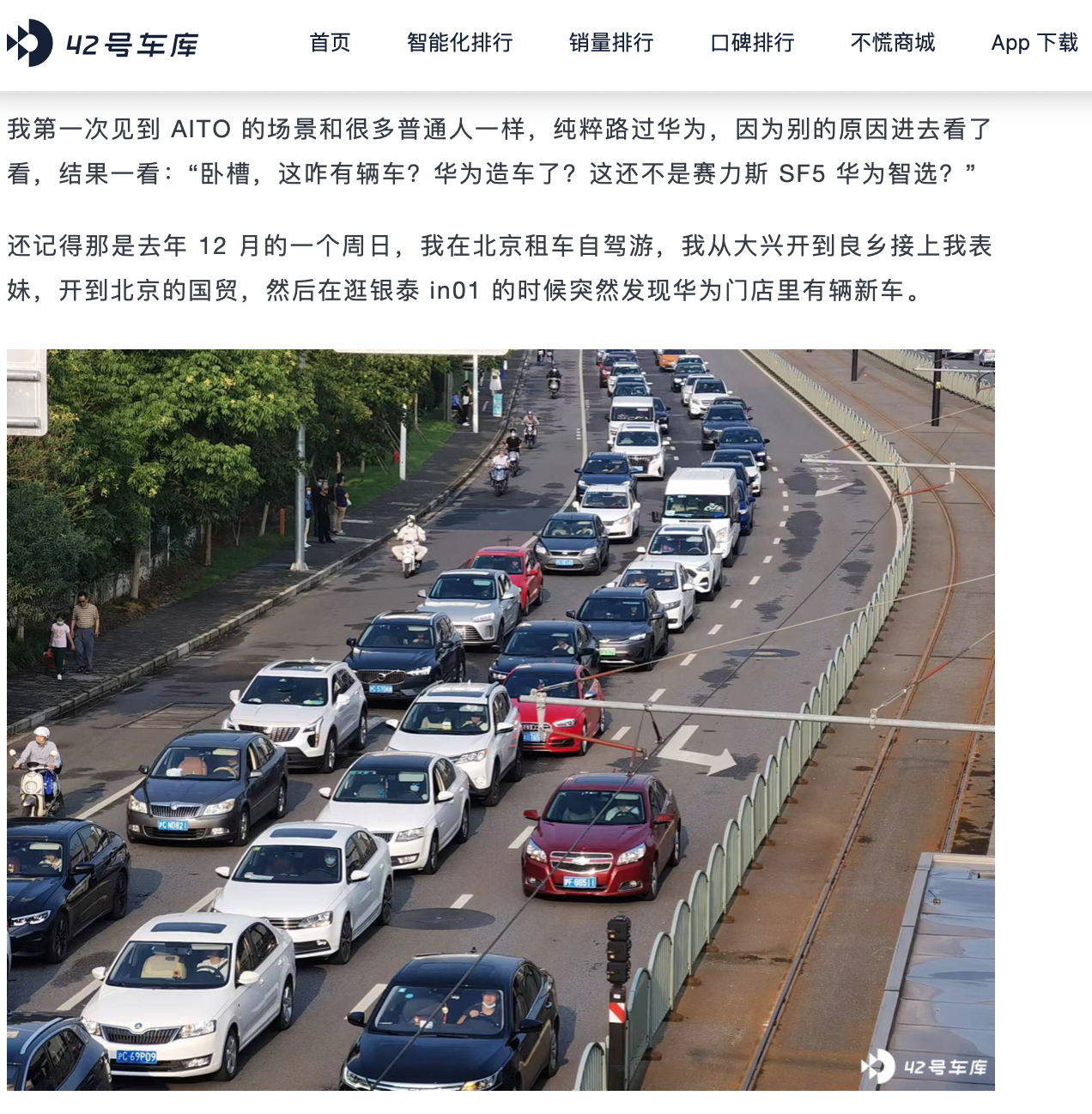
Secondly, there is perceivable intelligence.
We often discuss intelligence, which can be divided into intelligent driving and intelligent cockpit. According to available data, the penetration rate of intelligent driving in the industry was about 20% in the first half of the year. Young consumers or geek users with higher acceptance are the specific target groups for intelligent driving. However, Huawei’s target audience is much higher, and compared to new forces, as a giant in the consumer electronics and ICT fields, Huawei has stronger brand appeal, making it easier for users to try intelligent products without resistance.
Compared to intelligent driving, the intelligent cockpit is a “perceivable” intelligence. When users enjoy the convenience brought by voice interaction, they become a user of a smart cockpit without realizing it, and over time, their habits are changed.
Many people say that Huawei is a catfish, but equally important to driving market development is enabling consumers to use intelligent products without needing to be “educated.”
This article is a translation by ChatGPT of a Chinese report from 42HOW. If you have any questions about it, please email bd@42how.com.
